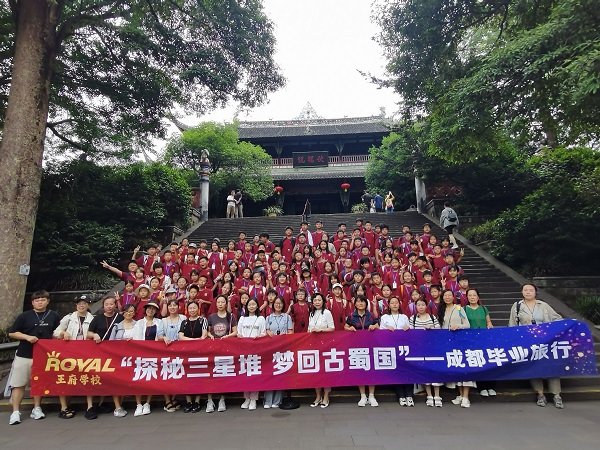search for a Trip
East Tibet Tours is Replacing Central Tibet Tours
East Tibet Tours is Replacing Central Tibet Tours
By Jason Huang Tibet has long been the hottest destination in China tourism, but it seems that East Tibet is changing this situation quietly recently.
Tibet is very wide in both land and conception. Normally when we mention Tibet it means Xizang Autonomous Administration, which is Tibetan area around Lhasa, belong to U Tibetan area. But actually a lot of Tibetan areas are existing on the wide Tibetan and Qinghai plateau besides Xizang province in central Tibetan plateau and they are separated by Sichuan, Yunnan, Qinghai and Ganshu province: Ganzi Tibetan Prefecture and Aba Tibetan Prefectures in Sichuan province, Diqing Tibetan Prefecture in Yunnan Province, Yushu Tibetan Prefecture and Goluo Tibetan Prefectures in Qinghai Province. These areas are all located on the East part of Tibetan plateau, so we called it East Tibet, also Kham area.
On East Tibet, the tourism resources of nature and culture are much richer than U Tibetan area.
On nature, this wide land is mixed with various snow mountain, alpine forest, various lakes, grassland, wildlife, and start drainage of large rivers. You can hardly believe more than 20 snow mountains over 5000 meters in sea level were spread here, such as Mt. Meili in Deqin, Mt. Alimaqin in Yushu, Mt. Siguniangshan in Xiaojin, Mt. Geli in Litang, and Mt. Gongka reached 7560 meters as the highest and won itself the paradise of outdoor mountain climbing and trekking.
Mountains are always co-existing with beautiful forest. Jiuzhaigou Valley is the world class attractions due to its forest, calcified lakes, waterfall. And the many dense forests in the mountain area provides rich resources in plants and wildlife. Wolong Panda Nature Reserve, Weixi Golden Monkey Nature Reserve, Baiyu White Lip Deer Nature Reserve, Batang Blue Sheep Nature Reserve, and more nature reserves have been build up on this area. They are ideal place for birding, wildlife photography and botanic tour.
In culture means, local Tibetan tribes and other ethnic minorities living on this wide land created their unique and glorious culture separately. Almost every city has its own tradition and sub branch in culture, some of them even widely known in all Tibet, even world: the epic of King Gesar from Shiqu, the Buddhism Printing School of Dege, the Losar and Butter flower festival in Xiahe, the International horse racing Festival of Litang, the Regong Painting culture of Tongren, etc.
And Tibetan Buddhism felt into many small sections here, and you can find the the monastery of Gelupa of Labrang in Xiahe, Ningma monastery in Baiyu, Juelang Monastery in Rangtang, huge Wuming Buddhism school in Seda and Yaqing Buddhism School, and hot tour spots of Songtanlin Monastery, etc.
The East Tibet are developing very quickly in both their economy and transportation these years, which made their tourism becoming more and more convenient.
Ganzi and Aba Tibetan Prefecture of Sichuan province could be the core of East Tibet tourism relying on its own rich attraction resources as well as the close Chinese Han culture of Sichuan province. Jiuzhaigou valley in Aba prefecture has been the TOP destinations in China for over 40 years, the daily tourist reached as 40,000 in 2017 before the earthquake. And Daocheng Yading is becoming new hot destination in China, and the daily tourist reached as 15,000 in 2018. Compared with Aba, Ganzi is on its way of high development these years with more and more success of quick transportation. The express way from Chengdu to Kangding shortened the long driving as only 3 hours now, and the well paved highway has connected every cities in this area, which made the hidden attractions in them become much easier. And three civil airports has been built up at the end of 2018, which could deliver tourist from Chengdu, Beijing, Guangzhou and Shanghai to the north and south Ganzi prefecture just in a few hours. Even more, the railway from Chengdu to Lanzhou via Jiuzhaigou and line from Chengdu to Lhasa via Kangding are under construction.
For Diqing Tibetan prefecture of Yunnan, it has succeeded in making Shangri-la well known in the world already 20 years ago although it is restricted by has restriction of only three counties of Shangri-la, Weixi and Deqin. Thousands of tourist are coming from Lijiang to Shangri-la over land or flying from Kunming to Shangri-la. And the new highway could also connect it with Daocheng Yading easily.
For Yushu and Guoluo Tibetan Prefectures in Qinghai province, both of them have nice paved highway, made the tours from Xining without one day’s driving, also easy to extend to Ganzi and Aba in Sichuan. Tibetan widely spread in these area, and in some means these area is the original drainage of Yellow River and Yangtze River.
Among the five counties of Gannan Tibetan Prefecture in Ganshu province, the Tibetan culture of Xiahe could be the most famous, especially its butter flowers. The Labrang monastery of Xiahe has long been respected as the TOP 5 Tibetan Monastery, and it is also closely connected with the painting culture of Tongren in Qinghai.
Compared with strict controlled U Tibet around Lhasa, East Tibet is lower in budget, and the most important, completely free in travel permit ! U Tibet around Lhasa has a lot of visiting restriction, and travel permits are required for foreigner, therefore Tourism here is easy to be affected by any subtle political changes. But East Tibet does not have any restriction in travel permit, and it is becoming easier in transportation every day! It is releasing its charm to the world with the booming construction of highway, airport and railway stations.
More Attractions






